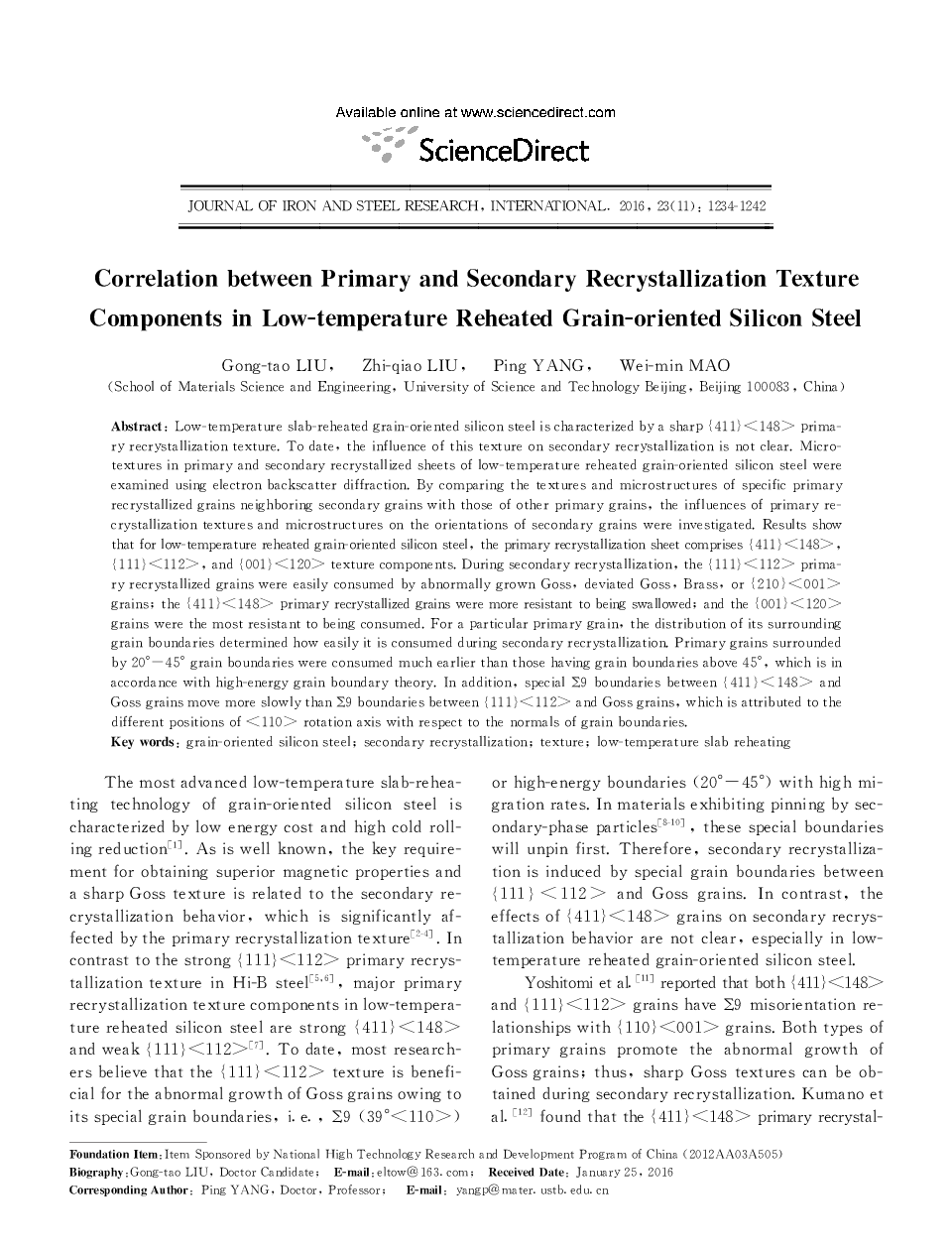| Article ID | Journal | Published Year | Pages | File Type |
|---|---|---|---|---|
| 8004448 | Journal of Iron and Steel Research, International | 2016 | 9 Pages |
Abstract
Low-temperature slab-reheated grain-oriented silicon steel is characterized by a sharp {411}<148> primary recrystallization texture. To date, the influence of this texture on secondary recrystallization is not clear. Micro-textures in primary and secondary recrystallizcd sheets of low-temperature reheated grain-oriented silicon steel were examined using electron backscatter diffraction. By comparing the textures and microstructures of specific primary recrystallized grains neighboring secondary grains with those of other primary grains, the influences of primary recrystallization textures and microstructures on the orientations of secondary grains were investigated. Results show that for low-temperature reheated grain-oriented silicon steel, the primary recrystallization sheet comprises {411}<148>, {111}<112>, and {001}<120> texture components. During secondary recrystallization, the {111}<112> primary recrystallized grains were easily consumed by abnormally grown Goss, deviated Goss, Brass, or {210}<001> grains; the {411}<148> primary recrystallized grains were more resistant to being swallowed; and the {001}<120> grains were the most resistant to being consumed. For a particular primary grain, the distribution of its surrounding grain boundaries determined how easily it is consumed during secondary recrystallization. Primary grains surrounded by 20°-15° grain boundaries were consumed much earlier than those having grain boundaries above 15°, which is in accordance with high-energy grain boundary theory. In addition, special â9 boundaries between {111}<148> and Goss grains move more slowly than â9 boundaries between {111}<112> and Goss grains, which is attributed to the different positions of <110> rotation axis with respect to the normals of grain boundaries.
Related Topics
Physical Sciences and Engineering
Materials Science
Metals and Alloys
Authors
Gong-tao LIU, Zhi-qiao LIU, Ping YANG, Wei-min MAO,
